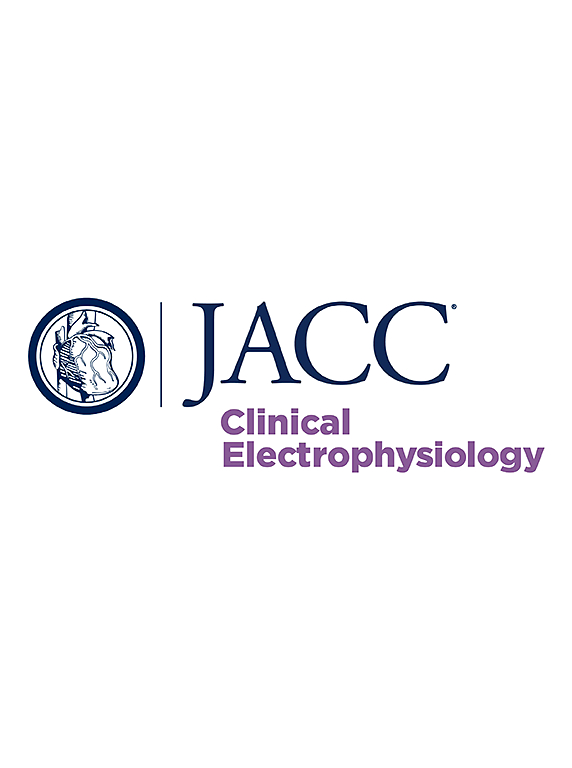Cardiovascular Disease-Specific Responses to Autonomic Denervation
IF 8
1区 医学
Q1 CARDIAC & CARDIOVASCULAR SYSTEMS
引用次数: 0
Abstract
Background
Calcium-mediated autonomic denervation has been shown to suppress postoperative atrial fibrillation (POAF) after coronary artery bypass grafting.
Objectives
This study sought to evaluate whether similar autonomic denervation can prevent POAF after mitral or aortic valve surgeries.
Methods
This research consisted of 2 single-center, randomized, double-blind, sham-controlled trials: CAP-AF2 (Calcium Autonomic Denervation Prevents Postoperative Atrial Fibrillation in Patients Undergoing Isolated Mitral Valve Surgery for Mitral Regurgitation) for mitral valve (MV) surgery and CAP-AF3 (Calcium Autonomic Denervation Prevents Postoperative Atrial Fibrillation in Patients Undergoing Isolated Aortic Valve Surgery) for aortic valve surgery. Patients were randomized to receive injections of either 5% CaCl2 or 0.9% NaCl (control) into the atrial ganglionated plexi during surgery. The primary outcome was the incidence of POAF ≥30 seconds within 7 days after surgery. Secondary outcomes included hospital stay, AF burden, actionable antiarrhythmic therapy for POAF, and inflammatory marker.
Results
After 160 patients were enrolled into the CAP-AF2 trial, mid-term analysis revealed a significant increase in POAF incidence in the CaCl2 group (55.13%, CaCl2 vs 37.80%, NaCl; P = 0.028). The CAP-AF2 trial was terminated by the safety committee. In the CAP-AF3 trial, 239 patients were randomized; final analysis showed no significant difference in the POAF incidence between the CaCl2 and NaCl groups (35.59% vs 39.67%, P = 0.516). Postoperative hospital stay, AF burden, antiarrhythmic therapy for POAF, and plasma levels of inflammatory markers were not different between the 2 groups in both trials. Immunohistochemical analyses showed parasympathetic predominance at the tissue level in patients receiving MV surgery.
Conclusions
Calcium-mediated autonomic denervation did not uniformly prevent POAF across all cardiac surgeries, with an increased incidence observed in the MV surgery group, highlighting the need for disease-specific strategies to prevent POAF. (Calcium Autonomic Denervation Prevents Postoperative Atrial Fibrillation in Patients Undergoing Isolated Mitral Valve Surgery for Mitral Regurgitation [CAP-AF2]; ChiCTR2000029314; Calcium Autonomic Denervation Prevents Postoperative Atrial Fibrillation in Patients Undergoing Isolated Aortic Valve Surgery [CAP-AF3]; ChiCTR2000029313).
心血管疾病对自主神经去支配的特异性反应。
背景:钙介导的自主神经去支配已被证明可抑制冠状动脉旁路移植术后心房颤动(POAF)。目的:本研究旨在评估类似的自主神经去支配是否可以预防二尖瓣或主动脉瓣手术后的POAF。方法:本研究包括2个单中心、随机、双盲、假对照试验:CAP-AF2(钙自主神经去支配预防二尖瓣术后二尖瓣返流患者术后房颤)二尖瓣手术和CAP-AF3(钙自主神经去支配预防主动脉瓣术后房颤)主动脉瓣手术。患者在手术中随机接受5% CaCl2或0.9% NaCl(对照)注入心房神经节丛。主要观察指标为术后7天内POAF≥30秒的发生率。次要结局包括住院时间、房颤负担、POAF可采取的抗心律失常治疗和炎症标志物。结果:160例患者入组CAP-AF2试验后,中期分析显示CaCl2组POAF发生率显著增加(55.13%,CaCl2 vs 37.80%, NaCl;p = 0.028)。CAP-AF2试验被安全委员会终止。在CAP-AF3试验中,239名患者被随机分组;最终分析显示CaCl2组与NaCl组POAF发生率无显著差异(35.59% vs 39.67%, P = 0.516)。术后住院时间、房颤负担、POAF抗心律失常治疗和血浆炎症标志物水平在两组试验中均无差异。免疫组织化学分析显示,在接受中压手术的患者中,副交感神经在组织水平上占优势。结论:钙介导的自主神经去支配并不能在所有心脏手术中均匀地预防POAF,在MV手术组中观察到发生率增加,这突出了预防POAF的疾病特异性策略的必要性。钙自主神经去支配预防二尖瓣反流孤立二尖瓣手术患者术后心房颤动[CAP-AF2];ChiCTR2000029314;钙自主神经去神经控制预防孤立主动脉瓣手术患者术后心房颤动[CAP-AF3]ChiCTR2000029313)。
本文章由计算机程序翻译,如有差异,请以英文原文为准。
求助全文
约1分钟内获得全文
求助全文
来源期刊

JACC. Clinical electrophysiology
CARDIAC & CARDIOVASCULAR SYSTEMS-
CiteScore
10.30
自引率
5.70%
发文量
250
期刊介绍:
JACC: Clinical Electrophysiology is one of a family of specialist journals launched by the renowned Journal of the American College of Cardiology (JACC). It encompasses all aspects of the epidemiology, pathogenesis, diagnosis and treatment of cardiac arrhythmias. Submissions of original research and state-of-the-art reviews from cardiology, cardiovascular surgery, neurology, outcomes research, and related fields are encouraged. Experimental and preclinical work that directly relates to diagnostic or therapeutic interventions are also encouraged. In general, case reports will not be considered for publication.
 求助内容:
求助内容: 应助结果提醒方式:
应助结果提醒方式:


